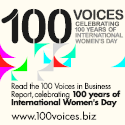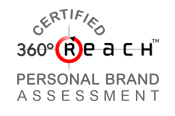This post was first shared in March 2012 and although LinkedIn has changed (with more changes on the way), one thing remains constant — if you want more opportunities you must market yourself. LinkedIn is a key marketing tool and the tips below are still very timely — making this post worth revisiting:
LinkedIn, a business-oriented social networking service, helps leverage your brand. Once your LinkedIn foundation is in place and you have started to add connections, it is time market yourself and your LinkedIn profile to your target audience and all who need to know you.
Do have your critical five pillars in place?
The critical five pillars are: Name, Headline, Photo, Personalized URL and Experience.
If they are in place, it’s time to add your personal contact information to your profile and make it visible. During a job search it is critical that you can be found easily. Before entering contact information into your profile decide how you want others in your network to reach you. Phone? Email? Mail?
Then, share with your network, and the other users of LinkedIn, the types of connections and communications to which you are open. Do you want job leads? Are you open to introductions? Or business ventures?
Next, make use of your Personalized URL. Your Personalized URL gives you a web presence. Add your URL to your email signature block, your business card and your résumé. Mention how to find you on LinkedIn and, if you are interested in connecting, invite others to connect with you at appropriate times.
Now, enhance your brand with a strong summary. Use your summary to tell your story. Who are you? What do you do? What are your accomplishments and specific results? Ensure it is readable, not too long and tedious, or filled with jargon. Allow your personality to shine in your summary and share your unique value. Be authentic.
Last, augment your profile and your brand by adding your specialties, unique brand attributes, leadership skills and a bit about your interests beyond work. Do you collect and renew classic cars? Build houses with Habitat for Humanity or volunteer for a special organization? Did you receive a special award or honor in your last job?
Used appropriately, these are the areas that can boost your brand. What will you do this week to market yourself on LinkedIn?
Need help with LinkedIn? Call and schedule a one-on-one appointment.

 The Black Hole . . . is it real?
The Black Hole . . . is it real? AUTOPILOT, cruise control and other automated systems are great tools. I highly recommend them. Putting systems in place allows you prioritize your schedule, giving you the time needed to complete the important and time-consuming tasks.
AUTOPILOT, cruise control and other automated systems are great tools. I highly recommend them. Putting systems in place allows you prioritize your schedule, giving you the time needed to complete the important and time-consuming tasks. Every person on earth is unique. You have talents and skills that lead you to do things in a way that no else can replicate.Embrace who you are. Stop being plain vanilla.
Every person on earth is unique. You have talents and skills that lead you to do things in a way that no else can replicate.Embrace who you are. Stop being plain vanilla.
 What’s next for you? Is it a transformation or a simple transition?
What’s next for you? Is it a transformation or a simple transition? Do you have a target job or employer? Are you wondering how to find or increase the number of your personal referrals?
Do you have a target job or employer? Are you wondering how to find or increase the number of your personal referrals? During a recent workshop an attendee stood up and stated that if employers want a specific and up-to-date resume they should, “just get over it.” Why? She argued no one has time to be specific or keep things current these days.
During a recent workshop an attendee stood up and stated that if employers want a specific and up-to-date resume they should, “just get over it.” Why? She argued no one has time to be specific or keep things current these days.
 The fourth quarter is upon us. And, in just 92 days the new year begins. Are you ready for a successful final quarter of the year?
The fourth quarter is upon us. And, in just 92 days the new year begins. Are you ready for a successful final quarter of the year? ope can take one to a dark and lonely place. It can create despair even when the world offers abundance.
ope can take one to a dark and lonely place. It can create despair even when the world offers abundance.

